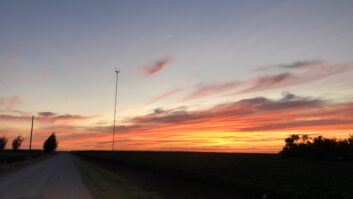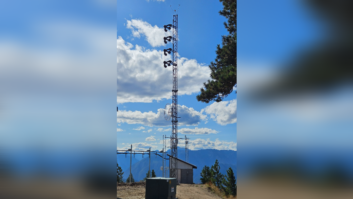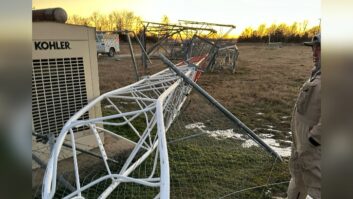This article was originally posted on RadioWorld.com.
Drones are here to stay. And that’s exciting news for the head of the National Association of Tower Erectors, who sees a bright future in terms of new applications and refined safety regulations surrounding the use of unmanned aerial systems (UAS). Radio World spoke with Todd Schlekeway, executive director of NATE, about the organization’s connection to the Commercial Drone Alliance, his takeaway on the provisions in the FAA Reauthorization Act of 2018, and how drones are being put to use as broadcasters deal with tall tower work due to the repack.
Radio World:What is your organization’s take on the usage of drones in the broadcast tower space?
Todd Schlekeway: NATE has been an enthusiastic supporter of expanding commercial UASes for some time. We joined the Commercial Drone Alliance [an organization committed to growing the commercial drone industry] about a year and a half ago. It’s clear that our industry could be benefactors [of legislation surrounding drones] over the long term.
Radio World:What specifically were you pleased to see implemented specific in the recent FAA Reauthorization Act of 2018?
Schlekeway: The key areas we were interested in [seeing implanting] were more flexibility with the waiver process, remote identification, and changes to tower marking.
One of the highlights is that [the act] expands and makes the waiver process streamlined and easier to use. Previously, unless you are an organization or company with a waiver to fly at night, beyond visual line-of-sight or over people, you had to file [a waiver] and that process took a long time. This FAA Reauthorization Act will set in motion a streamlined approach [to getting waivers approved].
From the commercial UAS perspective, we were very happy to see [the removal] of a clause from the previous authorization that essentially exempted hobbyist users from any remote identification. So this act is going to set forth a [procedure by which] all users are going to have to have remote ID.
This is significant because any time there is a registered drone, there will be accountability. Accountability breeds safety. That’s significant. The hobbyist community is very passionate about drones.
There’s also a provision impacting the previous tower marking mandate that was part of a short-term extension in 2016 [that] mandated that all towers between 50 feet and 199 feet be marked. Of course those towers over 200 feet are already lit and marked.
We fought hard against that; we don’t have the work force to retroactively [mark those towers]. It was one of those things that went too far by sweeping in communication towers. The 2018 act walked that mandate back. Now, those towers just need to be entered into a database.
Radio World: What kinds of reports are you getting from tower companies about how broadcasters are using drones?
Schlekeway: I reached out to two prominent broadcast contractors that are heavily involved with the repack and both had said they were using drones extensively with their tall tower work — specifically related to the repack. It’s just a different animal from a technical and engineering point of view. Technicians need to have a different skill set. This is a really specialized skill that not every company is capability of doing.
Some of the use cases [these contractors] were using UASes for were for complex construction such as rigging candelabras. Or using them to monitor their equipment with video and photo footage to look at structural analysis. Drones are useful to determine a lot of rigging obstructions, going to spots technicians can’t get to. There’s no question [drones] are playing a role.
Radio World: What else should radio and TV facility managers know?
Schlekeway: The broadcast industry needs to stay attuned to the evolving regulatory landscape. It’s about to get more flexible but you have stay up to date on the regulatory side of the house.
Use of these drones is going to continue to increase year over year. But there’s now a higher level of training needed. At a recent UAS summit, reps from several industries said “if we’re going to go allow your contractor on our site, your guy better be trained higher than just the baseline.” There’s a need for graduated training requirements.
Radio World:What are your thoughts on the future role that drones will play in our industry?
Schlekeway: We are “all in” on what they can do for the broadcast side and for cellular sites. But they not a replacement for the workplace. [They are] a powerful supplemental tool for the team to work safely and more efficiently and to streamline their work process.
Drones are here to stay. As use cases continue to evolve, stay attuned to the regulatory landscape.
Radio World: It’s a time of immense change for the industry.
Schlekeway: It’s exciting to see. I envision the day when every contractor company has a drone as a part of their operation, as a part of their toolkit. We’re not too far from that reality.












